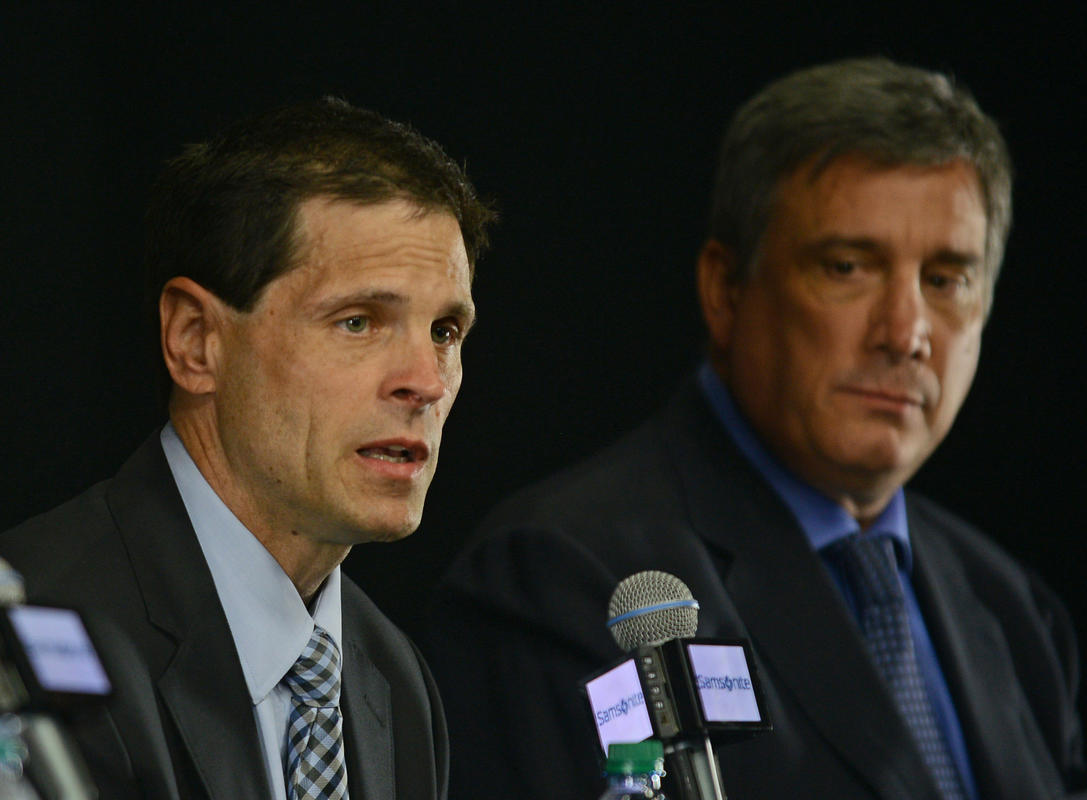 (Photo Credit: Ted Fitzgerald)
(Photo Credit: Ted Fitzgerald)
By: Chris Nosek | Follow Me on Twitter: @cnosek6342
Every team paying its players in any professional sport will ultimately have at least one contract that hurts the organization in some way. The players who are being paid on these contracts are often the ones who are most criticized either for being overpaid or for a decrease in performance. Other leagues allow for a new contract to be drawn up that could supersede a “bad contract” for the team as long as both sides agree to it.
With the hard salary cap structure in the NHL, teams are often stuck with bad contracts or will often suffer repercussions for getting out of them for years after they move on from the player. The Bruins are not exempt from this and have a number of contracts currently on their books that will hurt them this season or in the coming years. Let’s take a look at five of the top contracts that are putting Sweeney and his staff in a tough predicament.
5) Zdeno Chara
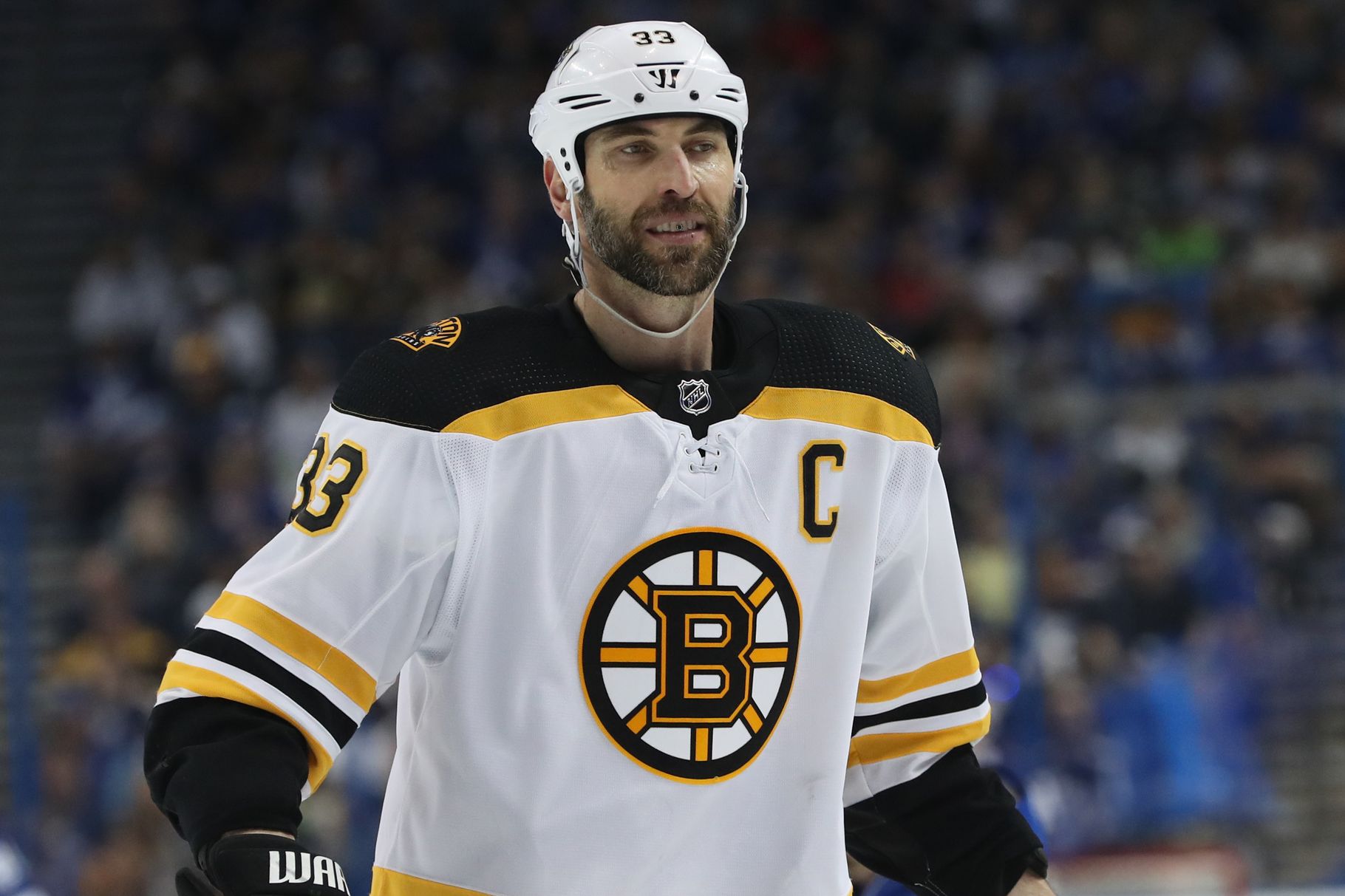 (Photo Credit: Kim Klement)
(Photo Credit: Kim Klement)
Let me be very clear; even though he is 41 years old, bringing back Zdeno Chara for another season was absolutely the right decision and something that Sweeney needed to do. However, that doesn’t make his contract a “good contract.” So let’s take a look at the contract. Chara has a 1-year contract that will pay him $5 million for next season, and he will go against the salary cap for the full $5 million this season. Cassidy and Sweeney better have a strong plan in place to limit their captain and keep him UNDER 20 minutes of ice time per night. Even though he can still play like an elite top-pairing defenseman, they really need to limit his minutes during the regular season to keep him from for the playoffs.
If the Chara conundrum stopped right there, then he would probably not be on this list because it is only for this season. However, there are still many questions regarding both the player and his contract. First and foremost, there is the potential for another $1.75 million to go against the Bruins salary cap for next season if Chara hits all the incentives in this contract. Also, if the team gets off to a slow start and is out of a playoff spot by the trade deadline, would they look to trade him so a younger defenseman can get the playing time? Lastly, if Chara decides not to retire, retaining him would cost more money next season in addition to the $1.75 million in incentives that could carry over. Right now, the best option is to try to send the captain off into retirement next season with the celebration of a nice large trophy while minimizing the $1.75 million next season because the $866,667 remaining from Jimmy Hayes’ contract will finally come off the books.
4) David Krejci
 (Photo Credit: Eric Canha)
(Photo Credit: Eric Canha)
When Krejci first signed his 6-year contract guaranteeing him $43.5 million he was one year removed from a 70 point season in which he played in 80 games. He also helped anchor the Bruins up the middle to their second Stanley Cup Final in three seasons. This deal looked like it could be a steal to have a good second line center locked up for so long — especially with a proven ability to put up a point per game in the playoffs. However, turnover on his wings combined with some injuries hampered Krejci’s ability to put up points and thus has made his $7.25 million cap hit a massive weight on their roster.
There has been great debate over the past two seasons about whether Boston should look to move the centerman — who would need to approve any deal his name is involved in. Despite being able to fetch the team a massive return to help their rebuilding process, the full no-movement clause in his contract has kept Krejci in Boston despite his inconsistent play. The clause will expire at the end of this season, and it is up to Krejci to play well enough to ensure Don Sweeney doesn’t want to utilize the eight-team list he will get at the start of the 2019-20 season.
At 32 years old, the Bruins’ highest-paid player has missed 30 games over the duration of this contract due to injury and has shown extreme inconsistency in his play. Although the Bruins haven’t helped him by giving him consistent wingers, Krejci’s play has fallen pretty significantly. Should the decline continue, looking to move him will look a lot more practical. However, for this season they should put Pastrnak and Debrusk — two wing players he has proven track records with — and hope that he can find his old form again.
3) John Moore
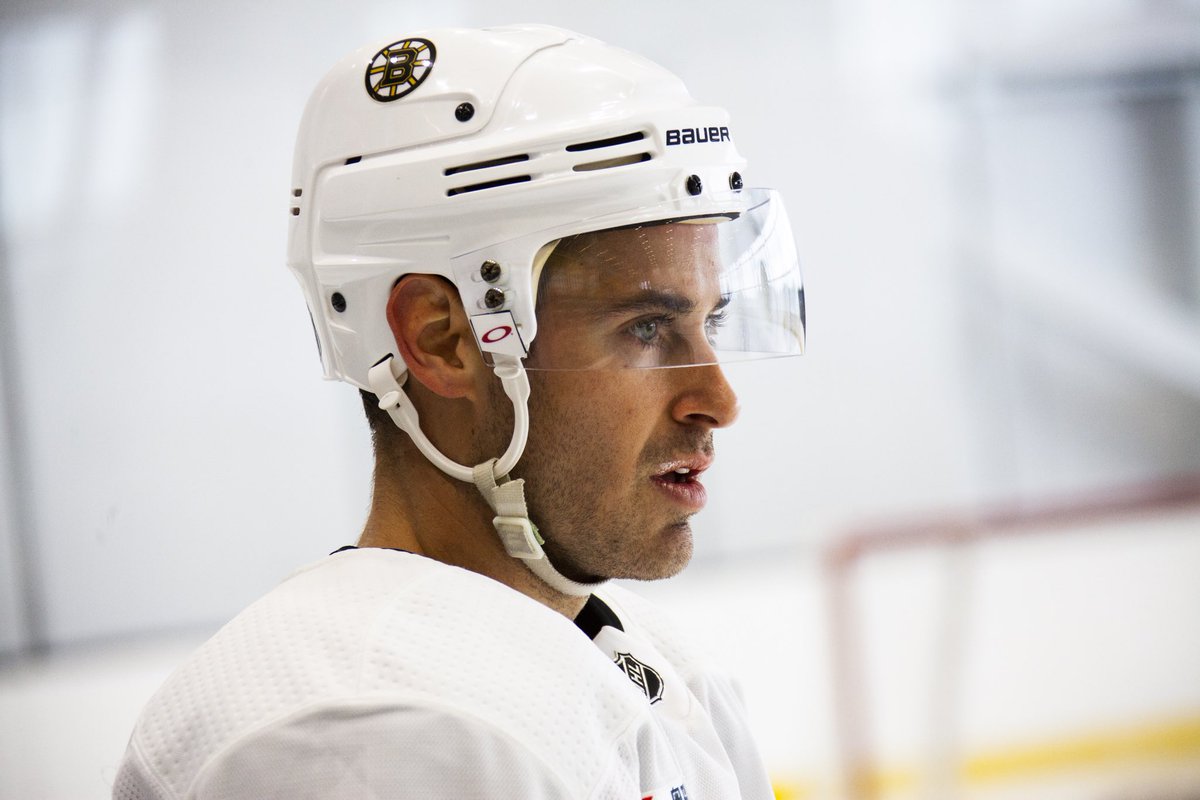 (Photo Credit: @NHLBruins)
(Photo Credit: @NHLBruins)
Due to the versatility that John Moore brings to the Bruins organization, it’s tough to hate this contract. In many ways, this contract makes a lot of sense. It makes even more sense when you see as the defense sits right now, there are no defenders locked up for two years from now — except for the recently signed entry-level contract for Urho Vaakanainen. Even though it is fair to assume that both Carlo and McAvoy will be re-signed, it never hurts to have a player locked up anyway. With the possible versatility that Moore brings to Boston (which you can read about in Mike Cratty’s piece The Potential Fluidity of John Moore’s Role as a Bruin), it makes complete sense to lock him up for a handful of years at the age of only 27.
The main reason why John Moore’s contract makes this list is because of what it does to them for this season. Even at a very reasonable cap hit of $2.75 million per season, his contract hurts because of all the other defenders that Boston has under contract this season along with a number of young guys who are working to break into the NHL level. With guys like Lauzon, Zboril, Vaakanainen, and Grzelcyk fighting for NHL ice time, the Bruins have depth guys that need testing already in the system. With only the top four spots fully secured by Chara, McAvoy, Krug, and Carlo, there are two starting spots open for all the young guys to fight for along with Kevan Miller and Adam McQuaid.
The Moore contract forces Sweeney into one of a few different options:
1) carry eight defensemen on the roster, or
2) send Grzelcyk (Carlo and McAvoy are eligible as well, but wouldn’t be chosen over Grzelcyk) back to Providence, or
3) cut/waive Miller or McQuaid and have them leave for nothing, or
4) trade someone currently on the roster; Krug being the guy who would net the biggest return.
The option that Sweeney goes with remains to be seen — thankfully, the final decision doesn’t have to be made just yet.
2) Adam McQuaid
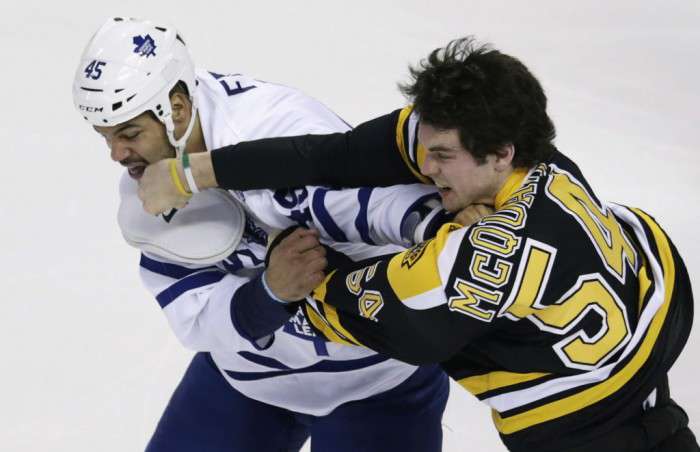 ( Photo Credit: Minas Panagiotakis/Getty Images )
( Photo Credit: Minas Panagiotakis/Getty Images )
Adam McQuaid is a 31-year-old, physical, veteran defender who most teams would love to have on their roster. His current contract that hits the Bruins salary cap for $2.75 million each season hurts the Bruins because they have never gotten a full season of play out of the 8-year veteran. Since signing his current contract, McQuaid has missed 25% of games dating back to the 2015-16 season. Without this contract on the books, the $2.75 million could have instead gone into free agents who were available over the past two seasons – or even re-signing Jarome Iginla, who showed he had good chemistry with other guys on this team.
With his current contract ending at the end of the season, the best option with McQuaid is to try to find a team who is willing to take on his full money value in exchange for a draft pick. Right now having the open roster spot and freeing up the cap space is more important for this team so either a younger player can fight for ice time, or they can bring a veteran in at the trade deadline. Giving a youngster NHL time for their development is more important during this rebuild than keeping the often-injured veteran on the squad.
As much as I love to watch McQuaid as a player, he has only hit the 70-games played threshold twice in his career while remaining under 40 games played FOUR times. If the Bruins can find a trade partner it is critical to move the defender as many teams will opt not to deal for him when keeping him in Boston forces them to either carry eight defensemen, trade a younger player, or cut McQuaid allowing him to be picked up for nothing.
1) David Backes
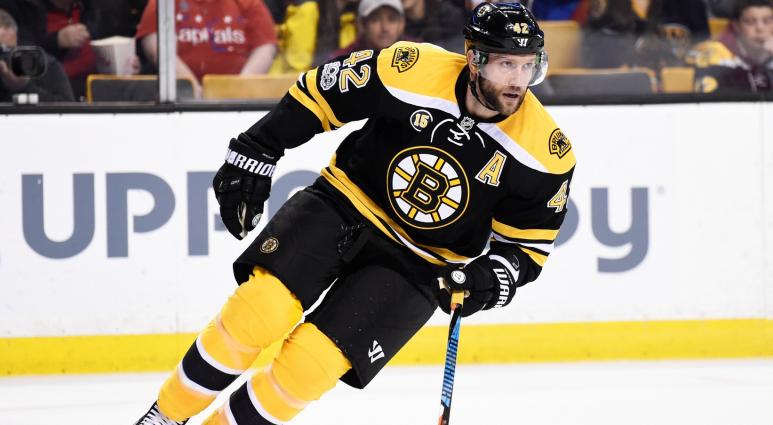 (Photo Credit: Bob Dechiara)
(Photo Credit: Bob Dechiara)
Coming from an incredible run of posting 460 points in 727 career games with the St. Louis Blues, David Backes looked like a guy who could provide Boston with versatility and some top-six scoring ability. He found a spot on this team as he would be able to provide solid depth at center on the third line after the departure of Carl Soderberg to Colorado and the ability of Ryan Spooner to step into the role still in question. Backes found himself playing the wing on the third line instead as he no longer had the speed required to play along Krejci’s right side and Riley Nash overtook him for the center position. This found Boston paying $6 million to a third-line winger who wasn’t good enough to break into the top-six grouping.
Last season, Backes had one of the worst of his career, and it wasn’t helped by the fact that he was diagnosed with diverticulitis and had to have part of his colon removed mid-season. As a result, he only played in 57 games and never truly found his game. Having watched his game decline year over year since departing St. Louis, many are now starting to question exactly what Backes can bring to the table next season. With so many young forwards bucking to make their own move to the NHL level the question now comes up: where does David Backes fit in on this team?
With the top two lines only providing options on the right side, and one of those spots going to David Pastrnak, only one spot on the wing is open. Most people are penciling either Anders Bjork or Ryan Donato for that spot (while Danton Heinen may also be a solid fit as well) which would leave David Backes on the third line again. Having a $6 million player on your third line for multiple years and a no-movement clause is not a formula for sustained success. If this were their only season issue with or their last season left with David Backes, then it wouldn’t be as much of a problem for the organization. However, they are also seeing an extremely inconsistent play and a number of injuries that keep piling up.
After suffering a concussion, a leg laceration, and his colon surgery last season, the Bruins have to wonder what other nagging injuries Backes suffered and exactly what he will bring to the table for this season. Sweeney can only hope that it would only cost one prospect paired with Backes for a team to be willing to bring on his salary and free Boston of this albatross contract — assuming it’s a team Backes would waive the no-movement clause to go to. Right now, the Bruins’ best option is to hope that he can find his production again while being on the third line, then look to move him at the start of next season when Backes submits his list of 15 teams once the no-movement clause turns into a modified no-trade clause. If Backes can’t find his game again, the Bruins could be stuck paying him $6 million to sit on the 9th floor while some of their younger guys help this team to succeed.
Honorable Mention: Torey Krug
Any team would give a massive haul to have a 27-year-old defenseman who can put up close to 60 points in a season. Any team who would let that kind of player walk as a free-agent would be considered insane. It wasn’t long ago when Torey Krug signed a 4-year contract that would pay him $21 million. At the time many thought this contract was a drastic overpay for a defender who is only 5-foot-9; now this contract makes Krug one of the best bargains in the league.
So how does Torey Krug find himself anywhere near this list? His contract will hurt Boston because it is going to end at the end of the 2019-20 season. This may only be an issue if the younger defenders develop and progress over the next 2 seasons as many think they can. When Krug hits the market in 2020, Boston will also be looking to negotiate new contracts for Kevin Miller, Matt Grzelyk, Jakub Zboril, Emil Johansson, and Jeremy Lauzon. They will also have just given new contracts to Brandon Carlo and Charlie McAvoy in the prior season. Just how much is it going to cost to lock Krug into another contract while he is still under 30 years of age, and how long are they going to need to commit to him?
Boston is not in the position that they should be considering trading one of their best defenders going into this season. The thought of trading Torey Krug this season is completely asinine as he has another year on his contract and there is no one who is ready to step up in his place once he departs. If McQuaid, Miller, and Chara are no longer in Boston in two seasons (which they shouldn’t be), then the core of the Boston defense will be two players under age of 23, plus Torey Krug and John Moore. If Boston had signed Krug to a deal with a longer term, then they wouldn’t have to worry about Krug’s contract during this crucial time during their rebuilding process. The good news is that if Sweeney does decide to move Krug going into next season, the return will be significantly higher than the price Boston paid to get Rick Nash for half of last season.


Leave a Reply